For many people, laundry seems like a laborious, or at least annoying, chore. First, the clothes need to be sorted, then washed, dried, folded and put away. Certain more delicate items, or items that risk shrinking, can’t go in the dryer and instead need to be hung, and many dress shirts require ironing before they can be worn again. Despite how time-consuming laundry can be, the modern process of doing laundry is significantly simpler and easier than it ever was before.
A Brief History of Clean Clothes

Centuries ago, when humans wore animal skins as clothing, there was no need to wash clothes. It wasn’t until they began fashioning clothing out of fabric that they needed to find a way to keep this new clothing clean. As humans continued to develop and modernize, their desire for cleanliness and personal hygiene also began increasing [1].
Humans first began washing their garments in whatever body of water they lived near, by pounding the clothes with rocks. Gradually, as civilizations began to develop and become more sophisticated, the washing process became more industrialized. Different soaps and tools were invented to make the process more efficient and effective, allowing people to wash their clothes more frequently, and thus have more clothes [2].
The first electric washing machine wasn’t invented until 1908, and the first automatic washing machine didn’t arrive on the scene until 1951 [2]. The use of washing machines became increasingly widespread, however, dryers were much less common. It wasn’t until 1938 that the use of the dryer started to become known, however, the cost of these machines was prohibitive for the majority of families through the forties and sixties. In fact, clothes dryers didn’t become a common home appliance until the 1990s [3].
While most of us have automatic dryers in our homes now, our grandparents, and even many of our parents, will remember the days of hanging their clothes on the line.
Read More: Grandma’s Adventure Box Idea Is The Gift That Keeps on Giving
8 Simple Rules for Hanging Out the Laundry
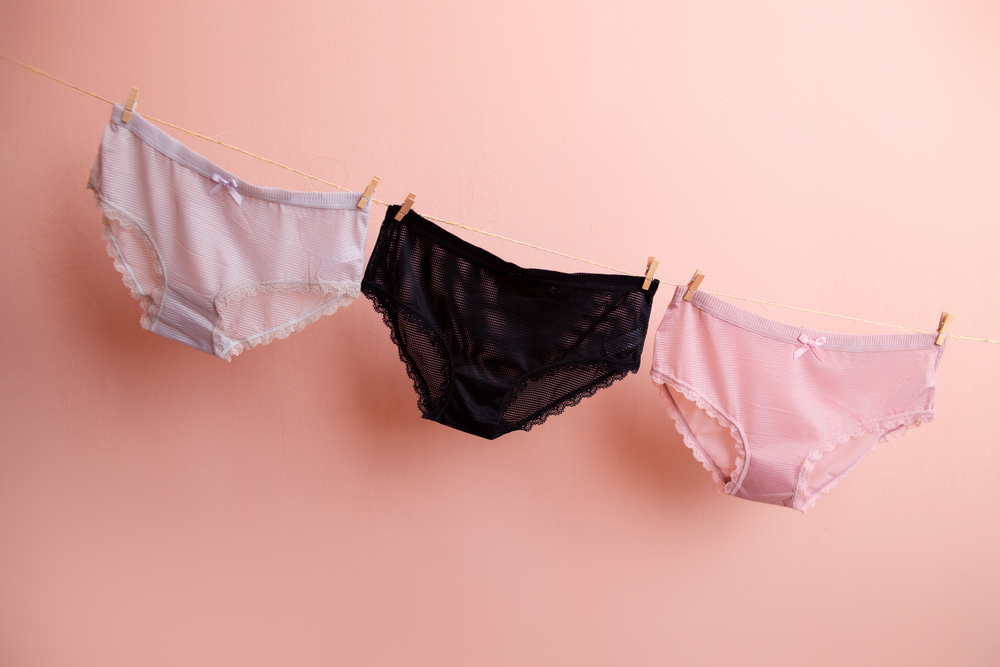
Although it may seem like a fairly straight-forward task, there were rules for how to properly hang your clothes in order to dry them effectively, and not heeding these rules could land you in trouble.
Rule #1: Wipe down the clothesline
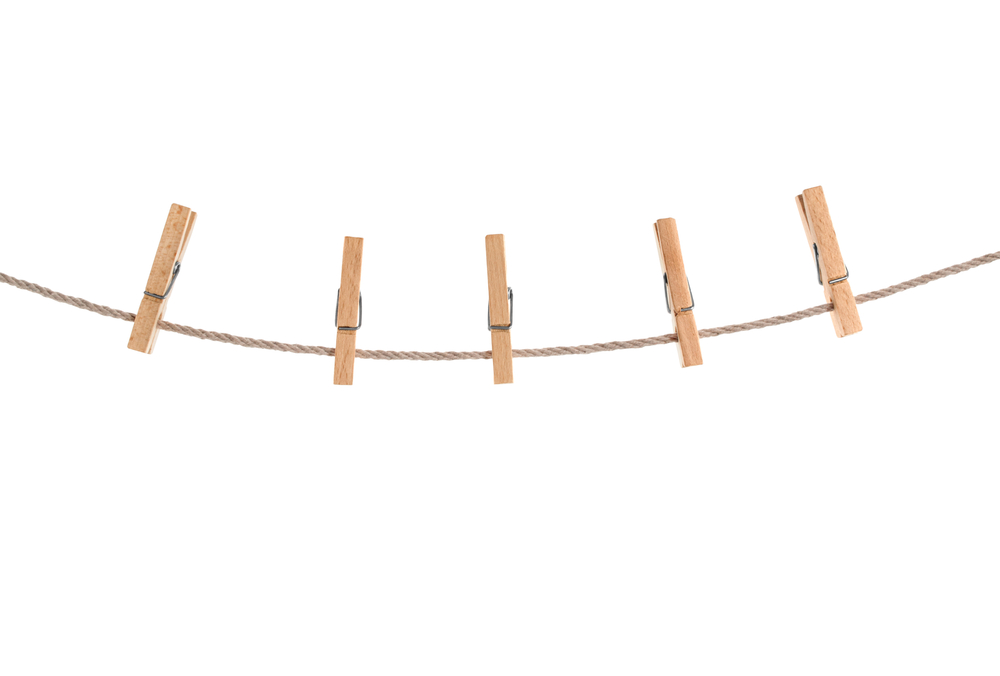
Since the clothesline is kept outside, it frequently collects dust and dirt that could then get on your clean clothes when you hang them up. A quick wipe is all it takes to prevent this from happening, but if this step is forgotten, it could result in you having to do the laundry all over again.
Rule #2: Hang the socks by the toes
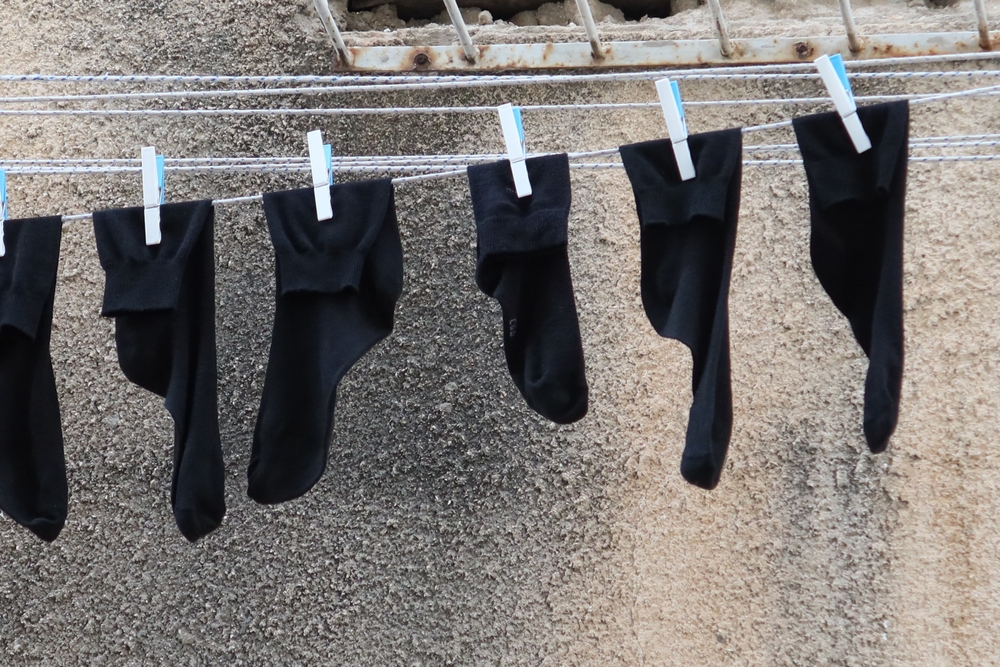
If you hang your socks by their tops, the heavier, foot-portion of the sock will weigh it down and stretch it out at the ankles. Your socks will still gradually stretch over time if you hang them by the toes, but it will happen slower, allowing you to get more wear out of your socks.
Rule #3: Sheets on the edges, underwear in the middle

This rule was mostly to prevent your neighbors from getting a good look at your unmentionables, but larger items also take up more space, so hanging them first made sure there was adequate room for them on the line.
Rule #4: Color-code your laundry
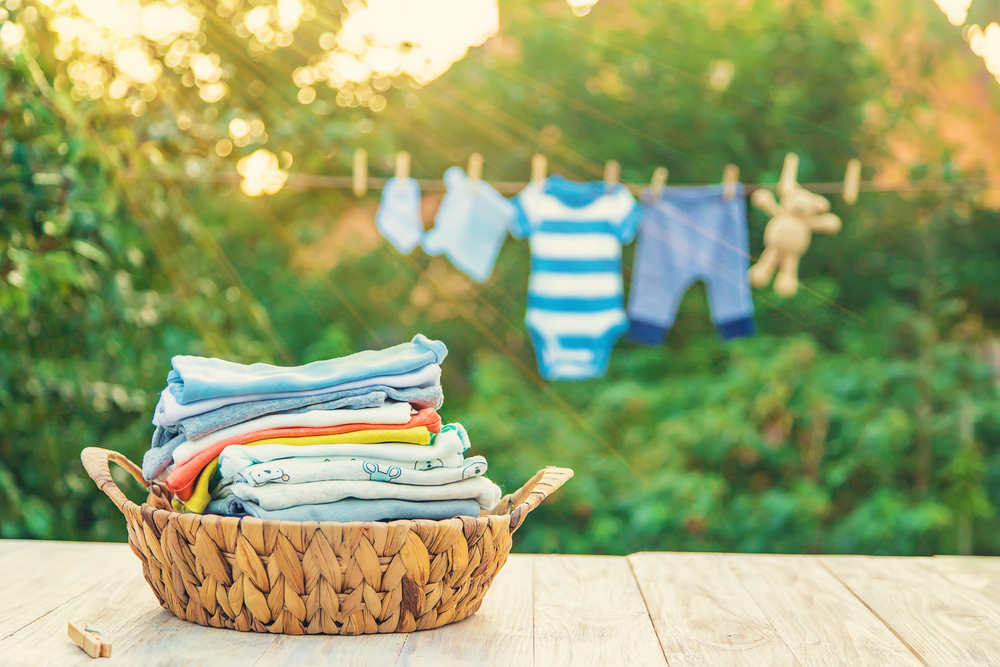
The general rule is whites go with whites, and darker colors get hung separately. This way, if any of the colors bled while drying, they wouldn’t ruin your bleached items. White items should also be hung in the sun, while colors should be left in the shade to avoid fading.
Read More: 70-Year-Old Grandma Wants To Retry Breastfeeding And Asks To Nurse Her Grandbabies
Rule #5: Shirts are hung by the bottom, not the top
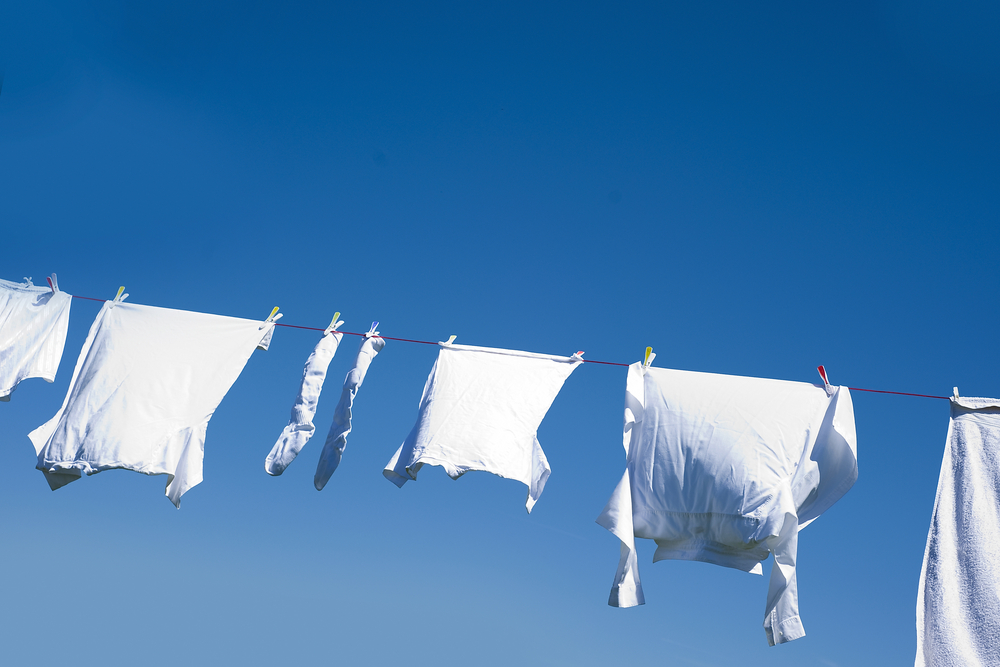
If you hang shirts by the shoulders, the clothespins are likely to leave large dimples and wrinkles, which can be difficult to iron out. The bottom of the shirt is easier to iron, and if there are any wrinkles that you can’t get out, they can be hidden simply by tucking the shirt in.
Rule #6: Clothespins do double duty

When you hang your laundry out, each item should share a clothespin with its neighbor. The reason for this is purely economical- clothespins are easily lost, and so to cut down on the number of pins that you need, you simply use one pin to hang two items.
Rule #7: Clothespins come inside

This is for the same reason that you hung two items per peg: losing pegs is frustrating, and for the frugal clothes-washer, keeping them inside lessens how often you have to go out and purchase new ones.
Rule #8: Clothes get hung in the winter, too
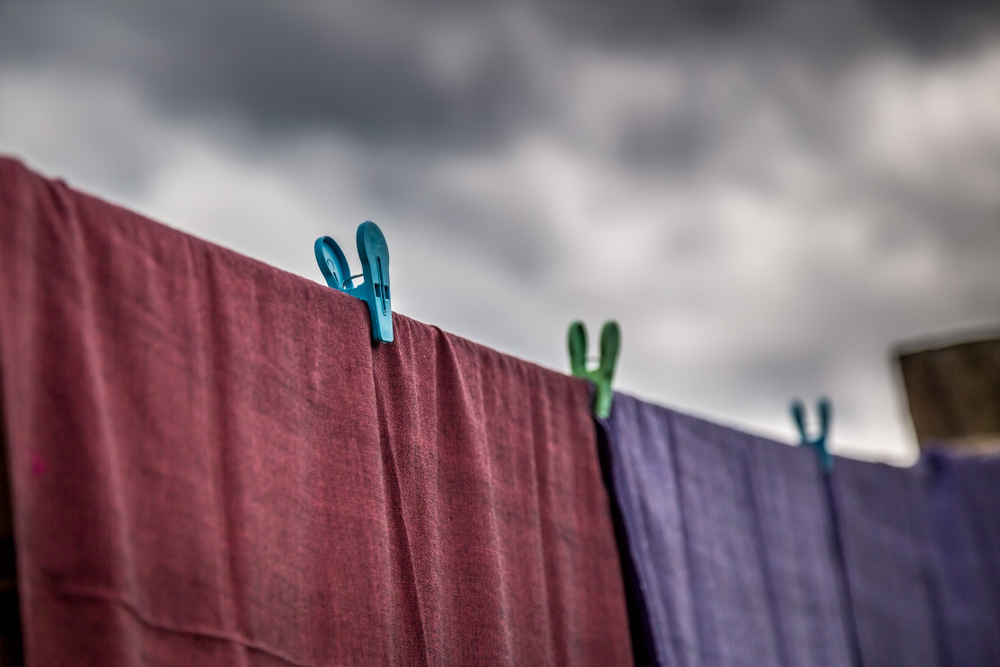
Today, our homes have better ventilation, and most of us don’t heat them with a fireplace, so hanging the laundry inside during the winter may be more of an option if you have space for it. However, the rule used to be that no matter what, clothes were dried outside, or else you run the risk of having your clothes smell like the fireplace, or smelly musty because they didn’t dry fast enough indoors [4].
Read More: 10 Things Grandma Never Threw Away
The Benefits of Hanging Your Clothes to Dry
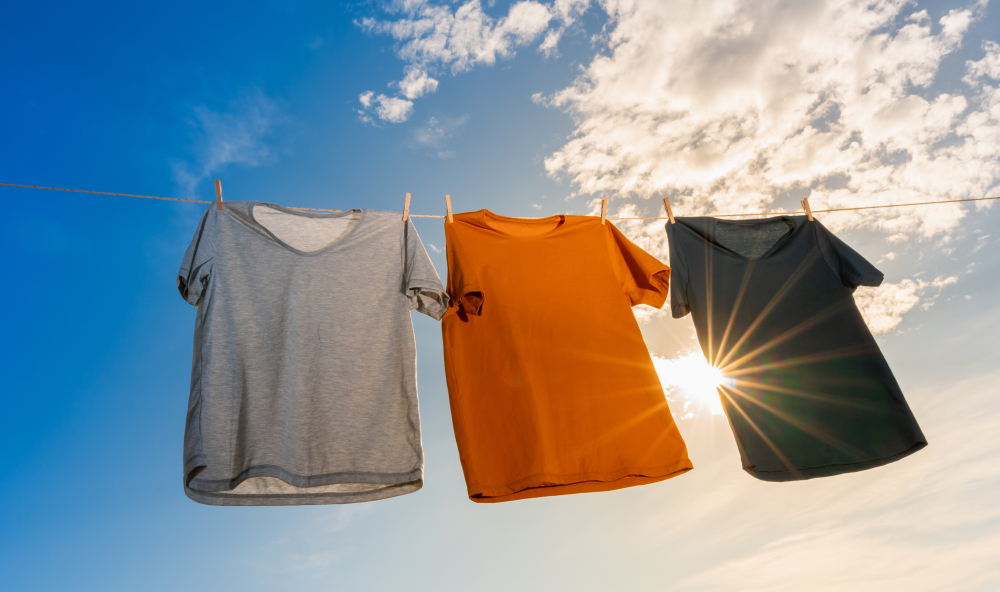
While the modern clothes dryer may offer convenience, there are still many people around the world who continue to hang their clothes out on the line, and this age-old practice actually has a number of benefits. If you’re looking for a way to cut back on your utility bills, hanging your clothes outside on the line can save you some money. In fact, ditching your dryer could save you more than two hundred dollars every year [5].
Part of these savings comes from energy conservation, which, incidentally, is also beneficial to the environment. Switching to line-drying could reduce your carbon footprint by 2 400 pounds per year, and some experts have estimated that if all Americans line-dried their clothing for just half the year, it could reduce our CO2 emissions by over three percent [5]. Line drying is also much gentler on clothing and can improve freshness and decrease odors without the use of additional chemicals or fabric softeners. This may be particularly beneficial for those who are more sensitive to fragrances and chemicals that are found in many detergents and dryer products.
Additionally, line-drying your clothes may be safer. Ultraviolet light from the sun helps to disinfect laundry, which is particularly important for items like underwear, bras, and diapers. You also don’t have to worry about your dryer catching fire, which accounts for 15 600 structure fires every year in the United States [5].
Grandma Knew Best

Clothes-washing has come a long way from its humble beginnings and has reached a point of efficiency that allows us to do the laundry on a whim, without too much headache. While line-drying may seem like a laborious task, perhaps your grandmother was onto something.
Technological advancements do come with their benefits, but sometimes the old way of doing things may actually be better. If you’re looking for ways to save a little money and lessen your impact on the environment, you may want to give line-drying a try, if nothing else it will get you outside to get some fresh air.
Sources
- ‘History’ The history of Svitavy museum
- ‘How People Used to Wash: The Fascinating History of Laundry’ The Scrubba
- ‘Appliances: The History and Advancements of the Washer and Dryer’ Easy Appliance Parts
- ‘Grandma’s Rules for Hanging Out the Laundry’ 12 Tomatoes. Rose Heichelbech
- ‘Top 10 Reasons to Line Dry Laundry’ The Spruce. Mary Marlowe Leverett. Published March 9, 2021.

